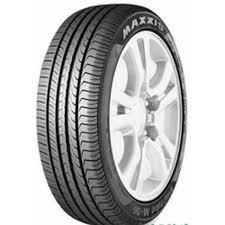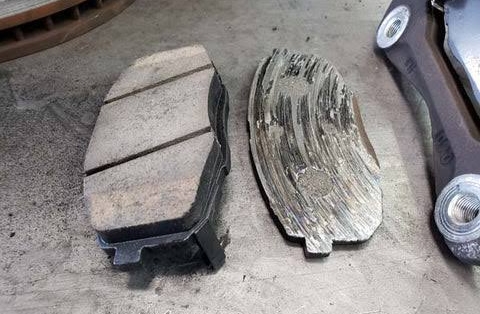Articles
How to Drive on Wet Roads: Avoiding Hydroplaning

Driving on wet roads presents unique challenges, especially when it comes to avoiding hydroplaning. Hydroplaning occurs when water builds up between your car’s tires and the road, reducing traction and causing a loss of control.
It is a leading cause of accidents during rainy conditions, but with proper techniques and preparation, you can navigate wet roads safely.
This article explores practical tips for driving on wet roads, the causes of hydroplaning, and how to prevent it to ensure your safety.
Understanding Hydroplaning
Hydroplaning occurs when a layer of water prevents your tires from making proper contact with the road surface. This happens when:
- Water Depth: Even a thin layer of water can cause hydroplaning if your tires are worn or driving speed is too high.
- Tire Condition: Bald or underinflated tires are more prone to losing traction.
- Driving Speed: Higher speeds reduce the time tires have to push water away, increasing the risk of hydroplaning.
- Road Surface: Smooth or oily roads worsen the problem, especially during the first minutes of rainfall.
Hydroplaning can lead to skidding, making it difficult to brake, steer, or accelerate effectively. Recognizing these factors helps drivers take necessary precautions.
Tips to Drive Safely on Wet Roads
1. Reduce Your Speed
Driving at high speeds on wet roads significantly increases the likelihood of hydroplaning. Slow down, especially during heavy rain or when water is visibly pooling on the road.
2. Avoid Sudden Movements
Abrupt braking, accelerating, or steering can cause your car to lose traction. Be gentle with your inputs to maintain control, especially when turning or merging lanes.
3. Maintain Proper Tire Maintenance
- Check Tire Tread Depth: Tires with sufficient tread (at least 2/32 inch) are better at channeling water away. Inflate Tires Properly: Underinflated or overinflated tires reduce the surface area that grips the road.
- Rotate Tires Regularly: This ensures even wear and optimal performance.
4. Increase Following Distance
Wet roads reduce braking efficiency, so maintain a greater following distance from the car ahead. The standard 3-second rule should be increased to 5-6 seconds in wet conditions.
5. Avoid Puddles and Standing Water
Driving through puddles can cause hydroplaning or hide potholes that could damage your car. If unavoidable, reduce your speed and drive straight through to avoid water splashing into critical components.
6. Follow the Tracks of Other Vehicles
The cars ahead of you often push water out of their path, leaving drier tracks for your tires. Align your tires with these tracks to improve traction.
7. Turn Off Cruise Control
Cruise control is not recommended on wet roads, as it can cause your car to accelerate unintentionally during hydroplaning. Control the throttle manually for better responsiveness.
8. Use Headlights
Rain reduces visibility for all drivers. Using your headlights, even during light rain, ensures other drivers see you. Avoid using high beams, as they can reflect off the rain and impair visibility.
9. Avoid Braking or Accelerating While Cornering
Wet roads make your vehicle more prone to skidding. Slow down before entering a turn, and maintain a steady speed through the corner to reduce the risk of losing control.
10. Stay Calm During Hydroplaning
If your vehicle begins to hydroplane:
- Don’t Panic: Stay calm and avoid sudden movements.
- Ease Off the Gas: Gradually lift your foot off the accelerator to let the car slow down naturally.
- Steer Straight: Maintain a firm grip on the wheel and steer gently in the direction you want to go.
- Avoid Braking: Sudden braking can worsen skidding. Instead, use light pumping motions if braking is necessary and your car doesn’t have ABS.
Preparing Your Vehicle for Wet Roads
Regular Inspections
Ensure your tires, brakes, and windshield wipers are in top condition before the rainy season. Replace worn-out wiper blades for clear visibility.
Check Your Vehicle’s Defroster
Foggy windows reduce visibility during rain. Ensure your defroster is functional to keep windows clear.
Ensure Proper Drainage
Keep tire grooves and tread patterns clean from debris to maintain water displacement capabilities.
Why Hydroplaning Prevention Matters
Preventing hydroplaning not only ensures your safety but also protects other road users. Accidents caused by wet road conditions often involve multiple vehicles, as hydroplaning can occur suddenly and without warning. By adopting safe driving habits and maintaining your vehicle, you can minimize risks and enjoy safer journeys in all weather conditions.
Final Thoughts:
Driving on wet roads requires extra caution and awareness to avoid hydroplaning and ensure a safe trip. By reducing speed, maintaining your tires, and avoiding sudden movements, you can significantly reduce the risk of losing traction.
Being prepared for wet road conditions and knowing how to react if hydroplaning occurs can make all the difference in staying safe.


















